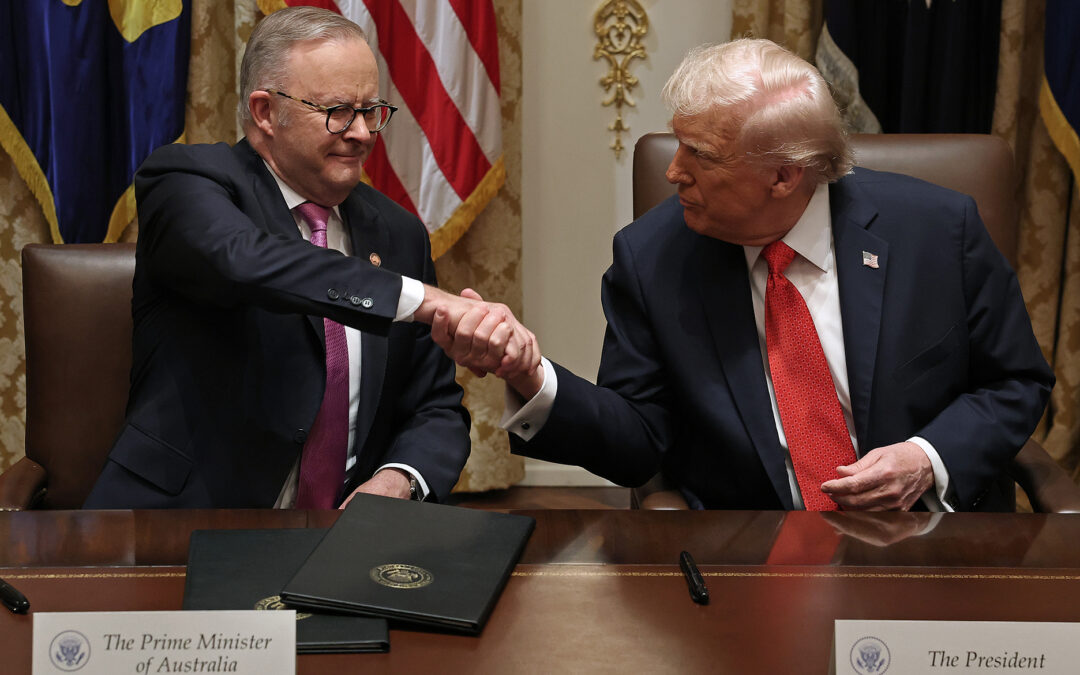President Donald Trump and Australian Prime Minister Anthony Albanese have signed a landmark Critical Minerals Framework, marking a major step toward advancing both nations’ ambitions for energy and minerals dominance. The agreement—finalized after five months of negotiations—aims to accelerate the buildout of resilient, allied mineral supply chains and reduce reliance on adversaries.
Q1: What is the U.S.-Australia Critical Minerals Framework?
A1: The new framework agreement employs a range of instruments to strengthen bilateral cooperation on minerals. The two nations will deepen cooperation by leveraging existing policy instruments—such as their strategic stockpiles—while safeguarding critical commercial assets from acquisition by adversarial actors. They will also deploy price-support mechanisms and targeted financing to accelerate the development of mining, processing, and recycling projects in priority commodities across both countries.
As part of the framework agreement, the United States and Australia will invest at least $1 billion in financing to projects located in the United States and Australia within six months, aimed at producing end products for offtake to buyers in both markets. This swift injection of capital marks a decisive push to fast-track project development and secure the minerals that will power the next generation of defense technologies.
Q2: Under the new framework agreement, how are the United States and Australia working to reduce China’s acquisitions of new mines?
A2: Australia and the United States have pledged to curb China’s acquisition of new mining assets by using existing tools—such as domestic investment screening—and coordinated diplomatic efforts to limit China’s expansion in third-country markets. This comes at a critical moment: Even as China slows domestic production and idles projects, its overseas mining acquisitions reached their highest level in a decade in 2024. The result is a fragile market—Beijing could swiftly upend global markets by restarting production at home or ramping up activity abroad. Proactively preventing these acquisitions is crucial to future market stability.
Q3: Why do price support mechanisms matter—and how will the United States and Australia collaborate to implement them?
A3: A key obstacle to minerals security is China’s deliberate manipulation of global markets—flooding them with excess supply to push prices so low that mines in countries like the United States and Australia become unviable. This approach has made it difficult for the United States and its allies to compete with China under current market conditions.
The United States and Australia plan to collaborate on creating standards-based trading systems that allow participating countries to trade freely within a stable pricing framework, including mechanisms such as price floors. They have also pledged to work with international partners to design a global framework to address pricing distortions in mineral markets. Price support measures are also expected to feature prominently in G7 discussions later this year.
Q4: Why is the U.S.-Australia bilateral relationship particularly important given China’s recent rare earth export restrictions?
A4: As Beijing intensifies its weaponization of rare earths and permanent magnets—including new export licensing rules targeting foreign-made magnets and semiconductor materials—the urgency for the United States and its allies to scale up production has never been greater. The new framework agreement specifically notes that the two countries will “capitalize on their respective existing domestic mining and processing operations in critical minerals and heavy and light rare earths as well as new capacity to be made available in 2026.”
Australia is the United States’ most important partner in countering China’s dominance in rare earths. In 2024, Australia was the world’s top destination for rare earth exploration, securing $64 million, or about 45 percent of worldwide investment—five times more than Brazil, the next-largest recipient. Australia hosts 89 active rare earth exploration projects, far outpacing Canada (18), Brazil (13), and the United States (12). As the world’s fourth-largest rare earth producer, Australia is also investing heavily in building its processing capacity, including a $1.25 billion government loan to Iluka Resources for its rare earth refinery, tied to offtake agreements with allied nations.
In May 2025, Australia’s Lynas Rare Earths reached a major milestone by becoming the first company outside China to produce commercial quantities of dysprosium oxide—one of the most important heavy rare earth elements—at its facility in Malaysia. Lynas obtains its feedstock from the Mount Weld mine near Kalgoorlie in Western Australia, which contains an estimated 2 million tons of total rare earth oxide reserves.
Earlier this month, U.S.-based Noveon Magnetics—the only company currently manufacturing permanent magnets domestically—signed a memorandum of understanding with Australia’s Lynas Rare Earths to form a strategic partnership aimed at developing a scalable U.S. supply chain for rare earth permanent magnets.
Q5: Why is Australia the United States’ indispensable partner in securing critical minerals?
A5: Australia holds three decisive advantages—world-class geological reserves, strong capital markets, and deep human capital. The country is a “periodic table that lights up like a Christmas tree,” boasting one of the broadest and richest concentrations of mineral resources on Earth. It is home to over 40 of the minerals identified as critical by the U.S. Geological Survey.
The mining sector often struggles to mobilize capital, given long project development timelines and the range of geopolitical, economic, and ecological risks. But the Australian Stock Exchange (ASX) is the world’s second-largest source of financing for junior and mid-tier mining companies after Toronto, but ASX-listed firms have a higher overall market value than those in Toronto—second globally only to Asian exchanges.
Australia also stands out as a global center of mining expertise. According to the 2025 QS World University Rankings, three Australian universities—University of New South Wales (2nd), Curtin University (5th), and the University of Queensland (6th)—rank among the world’s top six for mineral and mining engineering.
Q6: What roles are Australian firms playing in developing the U.S. domestic mining industry?
A6: Australian companies—including BHP, South32, Rio Tinto, and Lynas Rare Earths—are now the largest foreign investors in the U.S. mining sector, playing a pivotal role in rebuilding the United States’ domestic mineral base. Their projects span the full spectrum of critical supply chains: Resolution Copper, owned by BHP and Rio Tinto, will meet nearly 25 percent of U.S. copper demand; Hermosa, owned by South32, will be the only domestic mine capable of producing both zinc and manganese (germanium is recovered from zinc), and Lynas Rare Earths will separate and refine key rare earth elements used in the domestic manufacturing of permanent magnets.
Q7: What projects will this Framework Agreement support?
A7: The U.S. Export-Import Bank (EXIM) is set to issue seven letters of interest worth a combined $2.2 billion in financing—potentially catalyzing up to $5.0 billion in total investment aimed at strengthening supply-chain security. This marks an important continuation of recent momentum: Just last month, Australian firm RZ Resources secured landmark financing from EXIM—the first time an Australian critical minerals company has received such support since 2013, when EXIM last approved funding for the Roy Hill iron ore project.
The U.S. Department of Defense (recently renamed the Department of War) is also supporting the development of Alcoa’s 100-ton-per-year advanced gallium refinery in Western Australia to expand domestic processing capacity. It will be a trilateral effort between the United States, Australia, and Japan. This is significant considering the United States only consumed 21 tons of gallium in 2024. A 2024 policy brief from the CSIS Critical Minerals Security Program noted that “as an established ally, Australia would be an excellent partner for the United States to develop a bauxite-to-gallium refining pipeline.” The challenge in diversifying gallium supply lies in its scarcity—it occurs at less than 19 parts per million in the Earth’s crust and is produced solely as a byproduct of bauxite mining. The United States has small bauxite reserves (just 20 million metric tons) and minimal mining activity. Australia—home to the world’s second-largest bauxite reserves—offers the most geologically and commercially sound location for such a refinery.
The Australian Government announced $100 million equity investment in the Arafura Nolans project in the Northern Territory. Once operational, it will produce 5 percent of global rare earths.
Q8: Why is deepening U.S.-Australia minerals cooperation a natural extension of the United States’ longstanding defense partnership with Australia?
A8: Australia stands as one of the United States’ closest allies and longest-standing defense partners—supporting the United States in every major conflict since 1918. This relationship is bolstered by national security frameworks—including the 2014 U.S.-Australia Force Posture Agreement; the 2021 Australia, United Kingdom, and United States (AUKUS) trilateral security pact; and both nations’ role in the Quad—designed to strengthen strategic cooperation.
Alongside the new Critical Minerals Framework, Trump and Albanese also signed a commitment to deepen defense cooperation, noting that “Australia committed to enhanced burden sharing and is making new defense investments that will bolster the U.S.-Australia alliance.” As part of this partnership, Australia is purchasing $1.2 billion in Anduril unmanned underwater vehicles and $2.6 billion in Apache helicopters. Since February, it has contributed $1 billion—and will add another $1 billion by year’s end—to help expand and modernize the U.S. submarine industrial base, reinforcing the AUKUS security partnership. Australia is also investing $2 billion in U.S. firms to build its Joint Air Battle Management System and strengthening munitions supply-chain resilience through its Guided Weapons and Explosive Ordnance initiative, supporting over 200 U.S. manufacturers across Texas, Florida, Arkansas, and Alabama.
In a fireside discussion at CSIS earlier this year, Australian Ambassador Kevin Rudd emphasized that critical minerals are, at their core, defense assets. Integrating minerals into the longstanding U.S.-Australia defense partnership is a natural evolution of one of the United States’ closest and most trusted alliances.
Gracelin Baskaran is director of the Critical Minerals Security Program at the Center for Strategic and International Studies (CSIS) in Washington, D.C. Kessarin Horvath is a program manager for the Critical Minerals Security Program at CSIS.

